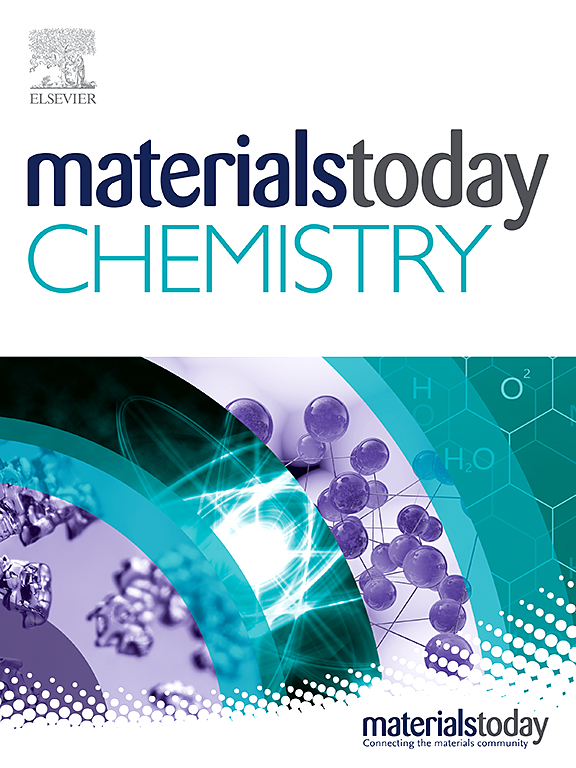Pyrazine-based supramolecular photosensitizing assemblies as type I photosensitizers for high-efficiency photooxidation reactions
IF 6.7
2区 化学
Q1 CHEMISTRY, MULTIDISCIPLINARY
引用次数: 0
Abstract
Donor-acceptor thermally activated delayed fluorescent (TADF) materials have been widely used in photocatalytic reactions as organic photosensitizers. However, the construction of TADF photosensitizers via a supramolecular self-assembly approach with the regulation of reactive oxygen species (ROS) is still a big challenge. In this study, a TADF molecule 4,4'-(6-(pyridin-4-yl)quinoxaline-2,3-diyl)bis(,-diphenylaniline) (TPA-PQ) by incorporating triphenylamine (TPA) act as donor and 6-(pyridin-4-yl)quinoxaline (PQ) act as an acceptor was designed and synthesized, which exhibited excellent TADF property and strong intramolecular charge transfer. Meanwhile, the TPA-PQ can not only self-assemble to form nanofiber structure in mixed solvent of HO and THF, but also can be used as a type I photosensitizer to selectively produce superoxide anion radicals (O). More interestingly, the ROS generated from TPA-PQ can be used as photocatalysts for the oxidative hydroxylation of arylboronic acids and aerobic cross dehydrogenation coupling (CDC) reactions with high yields of 92 % and 88 %, respectively. This study presents an innovative and eco-friendly approach to utilize TADF supramolecular structures for the purpose of conducting photocatalyzed organic reactions.基于吡嗪的超分子光敏组合物作为 I 型光敏剂用于高效光氧化反应
作为有机光敏剂,供体-受体热激活延迟荧光(TADF)材料已被广泛应用于光催化反应中。然而,如何通过超分子自组装方法构建具有活性氧(ROS)调控作用的 TADF 光敏剂仍然是一个巨大的挑战。本研究以三苯胺(TPA)为供体,以6-(吡啶-4-基)喹喔啉(PQ)为受体,设计合成了4,4'-(6-(吡啶-4-基)喹喔啉-2,3-二基)双(,-二苯基苯胺)(TPA-PQ)TADF分子。同时,TPA-PQ 不仅能在 HO 和 THF 混合溶剂中自组装形成纳米纤维结构,还能作为 I 型光敏剂选择性地产生超氧阴离子自由基(O)。更有趣的是,TPA-PQ 产生的 ROS 可用作光催化剂,用于芳基硼酸的氧化羟基化和有氧交叉脱氢偶联(CDC)反应,产率分别高达 92% 和 88%。这项研究提出了一种利用 TADF 超分子结构进行光催化有机反应的创新性环保方法。
本文章由计算机程序翻译,如有差异,请以英文原文为准。
求助全文
约1分钟内获得全文
求助全文
来源期刊

Materials Today Chemistry
Multiple-
CiteScore
8.90
自引率
6.80%
发文量
596
审稿时长
33 days
期刊介绍:
Materials Today Chemistry is a multi-disciplinary journal dedicated to all facets of materials chemistry.
This field represents one of the fastest-growing areas of science, involving the application of chemistry-based techniques to the study of materials. It encompasses materials synthesis and behavior, as well as the intricate relationships between material structure and properties at the atomic and molecular scale. Materials Today Chemistry serves as a high-impact platform for discussing research that propels the field forward through groundbreaking discoveries and innovative techniques.
 求助内容:
求助内容: 应助结果提醒方式:
应助结果提醒方式:


